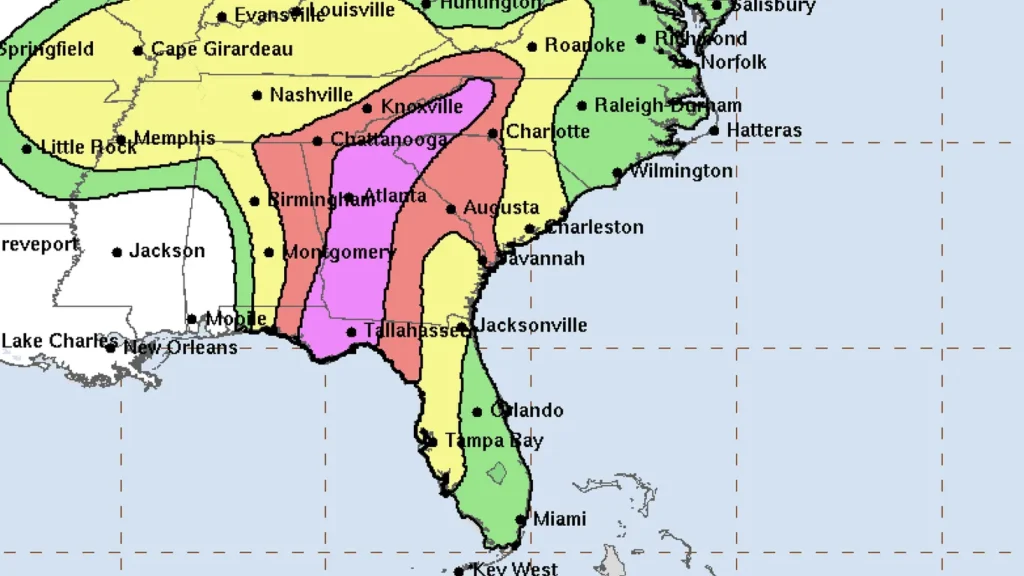
Map showing the blaze flooding potential from Storm Helene starting around Thursday evening. Pink implies a high liability of no less than 70%, red implies moderate danger of no less than 40%. Yellow and green are slight and peripheral. Realistic: Public Weather conditions Administration
Typhoon Helene undermines homes and resides all through an incredibly enormous triangle of the American South, from the southern tip of Florida, north toward the South Carolina coast, and west to eastern Arkansas.
Why it is important: An immediate hit for the Florida Inlet Coast. Potential tropical storm force twists in Atlanta. Twister dangers in Charleston, SC and Charlotte, NC. Noteworthy precipitation and flooding for Asheville and other darling Appalachian Mountain objections. Flood watches through Nashville and as far as possible across the Mississippi Waterway into Arkansas.
Danger level: The quick concern Thursday is Florida, where Helene is supposed to make landfall Thursday night toward the south-southeast of Tallahassee as a Classification 3 or higher tempest, possibly carrying an exceptional 15-to-20-foot storm flood to Florida’s Huge Twist region.
Yet, Helene will accelerate quick after landfall and zoom north toward Atlanta.
The country’s 6th biggest metro region, with in excess of 6 million occupants, could confront typhoon force wind blasts Thursday night and Friday morning. Assuming this is the case, it would be one of Atlanta’s most huge experiences with a typhoon or hurricane on record.
Countless individuals could lose power around Atlanta, given the mix of wind and downpour.
Zoom out: The most awful of the inland flooding, however, is gauge to happen much farther north, in the mountains where Georgia and Tennessee and North Carolina meet, where a few regions could see up to 15 crawls of downpour.
That could mean unparalleled flooding in places around the French Wide and Swannanoa waterways in the Asheville region. Such precipitation sums are probably going to cause avalanches and memorable flooding.
“This will be one of the main climate occasions to occur in the western bits of the region in the advanced period,” the Public Weather conditions Administration’s Greenville-Spartanburg office cautioned in a pressing message Thursday. “Record flooding is determined and has been contrasted with the surges of 1916 in the Asheville region.”
Flashback: The inland dangers of Helene, especially in Atlanta, have a few forecasters involving a stacked name as a correlation: “#Helene can possibly be Atlanta’s Hugo,” Charlotte-based meteorologist Brad Panovich posted. “An inland tropical storm [with] twists over a significant metro like what occurred in Charlotte in 1989.”
Hugo became one of the South’s most paramount and detested storms, not as a result of its horrendous landfall as a
The primary concern: Each tropical storm is an exceptional danger. Helene is one of the biggest at any point saw in the Bay of Mexico, and it will move inland much quicker than Hugo, significance its breezes could cut a buzzsaw-like harm way through the backwoods of Georgia and South CarolinaClassification 4 tempest close to Charleston, yet additionally on the grounds that it brought breezes up of 70 mph 200 miles inland to Charlotte, causing great many brought down trees for the time being.
Before Hugo, another famous tempest had a name starting with H: Hazel, in 1954, immersed southeastern North Carolina as a Classification 4 tempest on a full-moon elevated tide, then, at that point, dashed north, bringing about 95 passings in the US and 100 additional in Canada.

